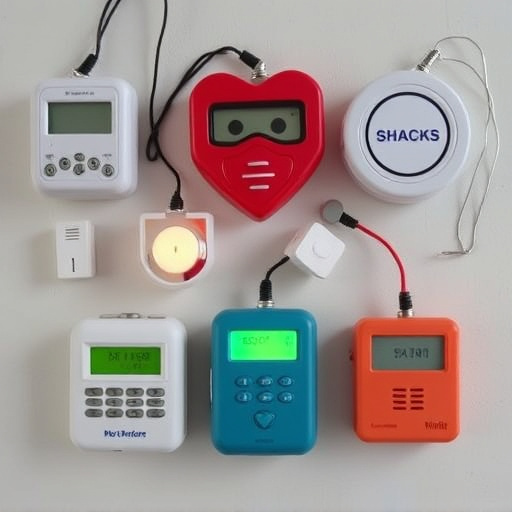Personal Safety Beacons (PSBs), also known as personal alarms, are compact life-saving devices designed for individual safety and peace of mind in remote areas or emergencies. They emit a distinct Personal Alarm Sound within their Personal Alarm Sound Coverage Area (PASCA), which varies based on technology and terrain. PSBs use GPS location tracking via cellular networks or satellite communication to signal for help, ensuring swift response times. Essential tools for outdoor enthusiasts, emergency services, and urban areas with high-density populations, these beacons offer real-time location sharing and robust encryption for data security while maintaining user privacy.
Personal safety beacons with location sharing are transforming the way we ensure our well-being. In an emergency, these innovative devices can transmit your exact GPS coordinates to emergency services, significantly enhancing response times. This article delves into the technology behind personal alarm sound coverage area devices, exploring their benefits, real-world applications, and addressing privacy concerns. By understanding how these beacons work, we can leverage their potential to stay safer in today’s world.
- Understanding Personal Safety Beacons: A Life-Saving Technology
- How Do Personal Alarm Sound Coverage Area Devices Work?
- Benefits of Location Sharing with These Beacons
- Real-World Applications: Where Are They Used?
- Ensuring Privacy and Security: Challenges and Solutions
Understanding Personal Safety Beacons: A Life-Saving Technology
Personal safety beacons, also known as personal alarms, are innovative life-saving technologies designed to ensure individual safety and provide peace of mind. These compact devices emit a distinct Personal Alarm Sound within a predefined Coverage Area, alerting nearby individuals or emergency services in case of distress. The coverage area can vary depending on the beacon’s design, battery power, and environmental factors, ensuring users have control over their safety network.
These beacons are particularly useful for outdoor enthusiasts, travelers, or anyone venturing into remote areas where help might be delayed. By activating the alarm, a user can signal for assistance, and the beacon’s GPS coordinates can assist rescuers in quickly identifying the individual’s location. This technology is a game-changer for personal safety, especially when navigating through challenging terrain or unexpected emergencies.
How Do Personal Alarm Sound Coverage Area Devices Work?
Personal alarm sound coverage area devices, also known as personal safety beacons, are designed to ensure immediate assistance during emergencies. These compact and portable gadgets emit a loud, distinct alarm that can be heard up to several hundred meters away, depending on environmental conditions. The device’s signal is typically transmitted to emergency services via cellular networks or satellite communication, allowing for accurate location tracking.
The coverage area of these devices varies based on factors like terrain, structures, and the specific technology used. Some models employ GPS for precise location sharing, while others utilize cell tower triangulation. Regardless of the method, personal alarm sound coverage area devices are engineered to provide a safety net by enabling users to quickly summon help in remote or urban settings alike.
Benefits of Location Sharing with These Beacons
Location sharing is a powerful feature that enhances the safety and security offered by personal safety beacons. By enabling this functionality, users can rest assured that their loved ones or emergency services will be promptly notified of their location in case of distress. This real-time tracking provides a sense of peace, especially when venturing into unfamiliar territories or during outdoor adventures where emergencies might arise unexpectedly.
The benefits are numerous; for instance, if an individual triggers the personal alarm sound within their coverage area, their exact position will be shared instantly, enabling swift response times. This feature is particularly valuable in remote areas with limited connectivity, as it ensures that help can reach the user faster than traditional 911 services might. Location-sharing technology also facilitates better risk management and incident prevention by allowing users to stay connected and visible to those who care for them.
Real-World Applications: Where Are They Used?
Personal safety beacons with location sharing have found their way into various real-world scenarios, offering peace of mind and enhanced security for individuals across different sectors. These devices are particularly useful in remote or isolated areas where quick response times can be critical. For example, outdoor enthusiasts like hikers or campers can use them to signal for help during emergencies, ensuring rescue teams can pinpoint their exact location despite the vastness of natural landscapes.
Moreover, personal safety beacons are widely adopted by emergency services, law enforcement, and even in urban settings where high-density populations make quick communication vital. The powerful Personal Alarm Sound serves as a distress call that can be heard over significant distances, drawing attention and triggering response protocols. This functionality is invaluable during situations like lost hikers, missing persons cases, or even active shooter scenarios, where rapid coordination and location sharing are paramount to effective crisis management.
Ensuring Privacy and Security: Challenges and Solutions
Ensuring privacy and security is a delicate balance, especially with technologies like personal safety beacons that share location data. These devices, designed to emit a distinct Personal Alarm Sound within a defined Coverage Area, offer vital assistance in emergencies. However, they also raise concerns about user information exposure. To mitigate these risks, developers implement robust encryption protocols for all data transmission, ensuring only authorized individuals can access personal details.
Moreover, users must be given control over their privacy settings, allowing them to manage who receives their location updates and when. Regular security audits and transparent communication about data handling practices are essential. By combining these measures, it’s possible to leverage the benefits of personal safety beacons while safeguarding user privacy and security.
Personal safety beacons equipped with location sharing capabilities represent a significant advancement in personal security, offering peace of mind and enhanced emergency response. By leveraging technology like Personal Alarm Sound Coverage Area devices, individuals can ensure their well-being, especially in remote or unfamiliar environments. While privacy and security concerns exist, continuous innovation and robust solutions are addressing these challenges, making personal safety beacons an increasingly viable and valuable tool for anyone seeking protection and rapid assistance.
